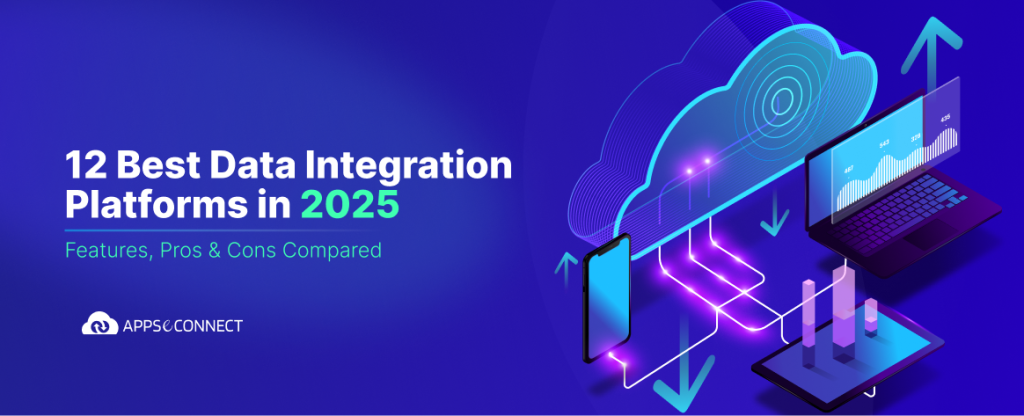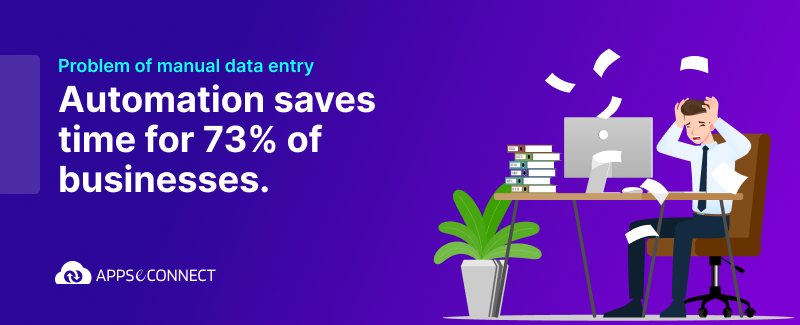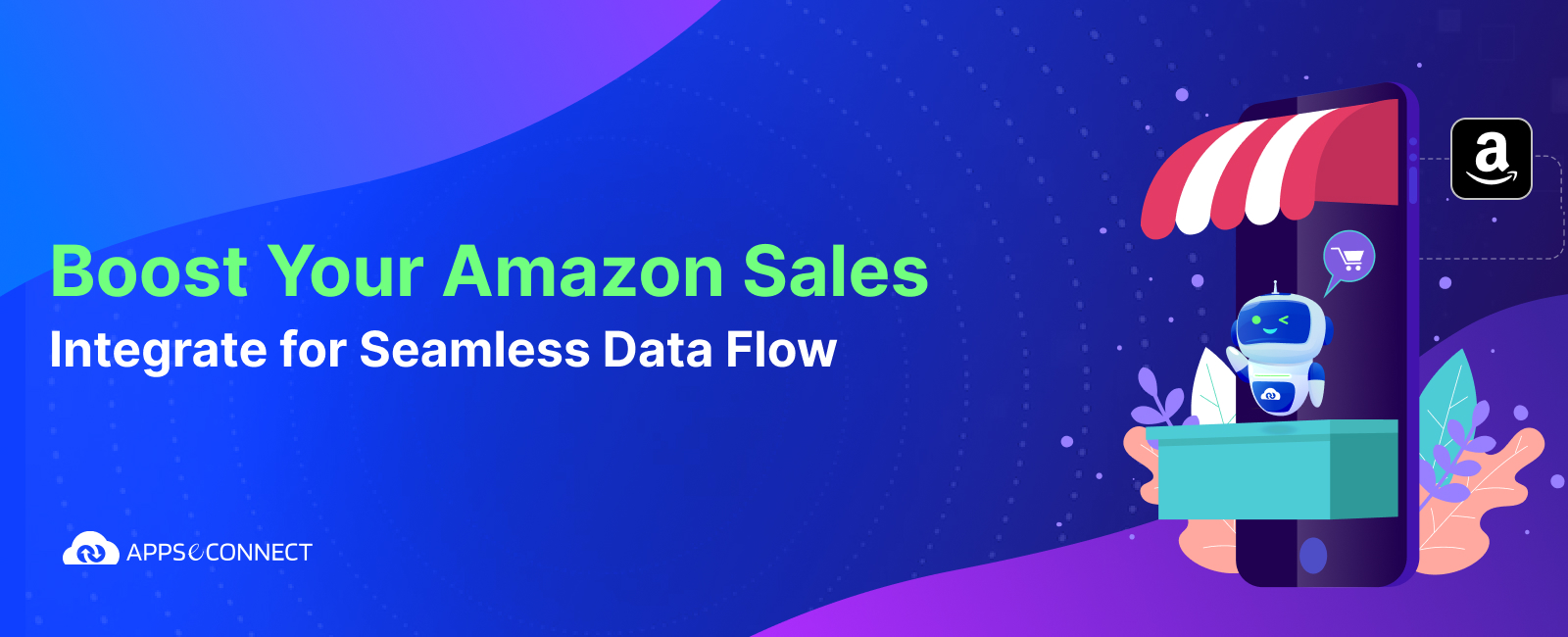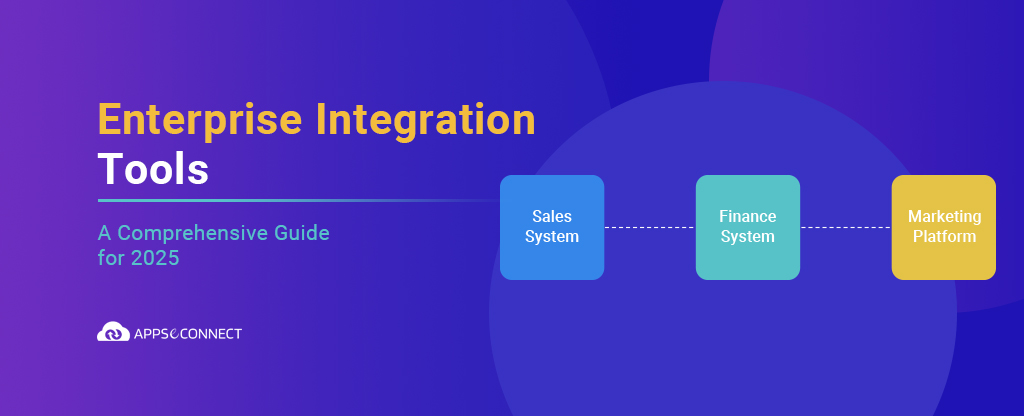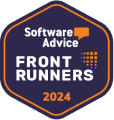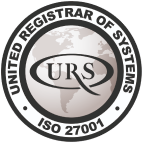Modern day businesses live and breathe data. Every decision, every strategy is powered by insights that only well-connected data can provide. But if your data is scattered across different systems and never quite talking to each other, it’s hard to get a consolidated view of your business data. The frustration of missing out on crucial insights because your information isn’t flowing seamlessly is all too common.
The good news? Today’s technology makes data integration easier than ever before. With a myriad of data integration platforms available, businesses have more options than ever to break down data silos.
However, this abundance can also make choosing the right solution feel like finding a needle in a haystack. Pricing models, feature sets, and advanced capabilities vary widely, leaving you to wonder which platform will truly meet your needs.
That’s exactly why we’re here. We’ve compiled a list of the top 12 data integration platforms, complete with a detailed comparative analysis, to help streamline your research. Our guide is designed to cut through the clutter, so you can make an informed choice and finally let your data work for you without the hassle.
What are data integration platforms?
Businesses rely on multiple systems and applications, each storing relevant business data. These can be your ERP systems, CRMs, eCommerce and shipping solutions, HR software, accounting systems, marketing tools and more. But things get challenging when these systems need to work together, sharing data and processes between each other.
Data integration platforms are tools that help businesses connect and consolidate data from various systems into one unified view. In simple terms, they either allow data sharing between two or more systems, or pull data from different systems and consolidate them in a data warehouse.
Without these platforms, you face the challenge of working with isolated data sets. You end up spending more time and resources on manual data entry and reconciliation. And despite your efforts, manual work leads to errors, delays, and a lack of timely insights.
Data integration platforms solve these problems by:
- Collecting Data: These tools pull data from multiple sources—whether on-premises or in the cloud.
- Transforming Information: They convert data into a consistent format, making it easier to compare and analyze.
- Enabling data synchronization: They can establish API-enabled, bi-directional data transfer between two systems.
- Consolidating Data: They can merge the transformed data into a single database or dashboard, providing a comprehensive view.
To make things better, modern integration platforms are extremely user-friendly. Most platforms are low-code or no-code, which means you can build integrations through visual designers with drag and drop workflow builders. Even teams without extensive technical expertise can set up and manage these integrations easily. Your data flows seamlessly between applications, allowing for real-time updates and better, faster decision-making.
Key factors for evaluating data integration platforms
When it comes to choosing the right data integration platform for your business, not all solutions are equal. To select a tool that truly meets your needs, it helps to have a clear set of evaluation criteria. Here are the key factors to consider:
Performance and Reliability
Look for platforms that offer fast, real-time data processing and robust error handling. Consistent uptime and reliable synchronization are crucial to keep your operations running smoothly.
Ease of Use
A user-friendly interface—ideally with low-code or no-code capabilities—empowers your team to set up and manage integrations without needing extensive technical expertise. Look for intuitive drag-and-drop builders and clear workflows.
Integration Capabilities
Ensure the platform supports a wide range of connectors and can seamlessly integrate with your existing systems, whether they’re on-premises, in the cloud, or a hybrid of both. The more flexible the connections, the better it can adapt to your evolving tech stack.
Scalability
Your data needs will grow as your business expands. Choose a platform that can scale with you, handling increased data volumes and more complex workflows without compromising performance.
Security and Compliance
Data security is non-negotiable. Evaluate features like encryption, access controls, and compliance with industry standards (such as GDPR or HIPAA) to protect sensitive information and maintain trust.
Customer Support and Documentation
Quality support can make all the difference when you encounter challenges. Check for comprehensive documentation, training resources, and responsive customer service to ensure you’re never left in the lurch.
Cost and Return on Investment (ROI)
Consider both upfront and recurring costs, and balance them against the potential time savings and efficiency gains. A good platform should offer clear value for your investment, making it easier to justify the expense over time.
With these criteria in mind, lets compare the best data integration platforms and solutions.
Best data integration platforms in 2025
With so many data integration platforms on the market, finding the right one can feel overwhelming. Each platform comes with its own strengths, features, and pricing models, making it essential to compare them side by side.
That’s why we’re compiling the best data integration platforms to speed up your search for the right solution. We’ll highlight their key features, pros and cons, and what makes each platform stand out.
Whether you need a simple, no-code solution or a highly customizable enterprise-grade solution, this guide will help you find the best fit for your business.
The top 12 data integration platforms are:
- APPSeCONNECT
- Boomi
- Jitterbit
- MuleSoft
- Celigo
- SnapLogic
- Workato
- Airbyte
- Fivetran
- Talend
- Informatica
- IBM
Let’s review each of these platforms in detail.
APPSeCONNECT
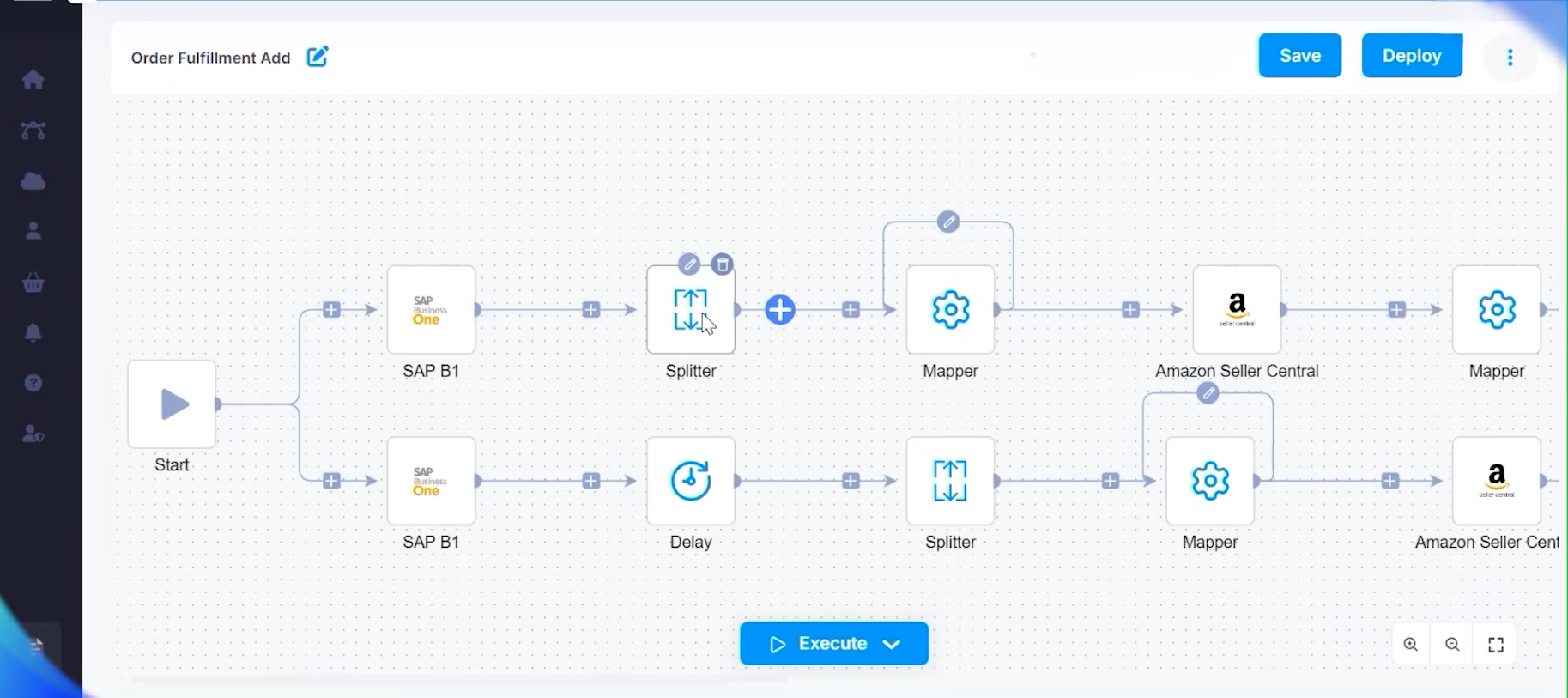
APPSeCONNECT is an integration platform as a service (iPaaS) designed to connect diverse business applications and automate processes. It offers a low-code visual integration designer where users can create workflows ranging from simple tasks to complex business process automation. The platform supports both cloud and on-premises deployments, providing flexibility to meet various business needs.
Platform key features
- ProcessFlow Designer: A low-code visual tool that allows users to design and implement integration workflows without extensive coding knowledge.
- Pre-built Integration Packages: Access to a vast library of ready-to-use connectors and pre-built integrations, facilitating faster deployment and time savings.
- Dual Deployment Options: Flexibility to deploy integrations either on the cloud or on-premises, catering to specific business requirements.
- Comprehensive Application Support: Seamless integration capabilities with a wide range of applications, including ERP systems like SAP Business One, CRM software like Salesforce and e-commerce platforms like Shopify.
Platform pros and cons
Pros:
- Exceptional Customer Support: Users consistently praise the platform’s responsive and knowledgeable support team, highlighting their efficiency in resolving issues and assisting with integrations.
- User-Friendly Interface: The intuitive design of the platform makes it accessible for users without extensive technical expertise, streamlining the integration process.
- Robust ERP Integration: Particularly noted for its seamless integration with top ERP systems like SAP Business One, SAP S/4HANA, Microsoft Business Central, and more.
Cons:
- Complex Initial Setup: Some users report that the initial configuration can be complex, especially when dealing with customized requirements, leading to a steeper learning curve.
Boomi
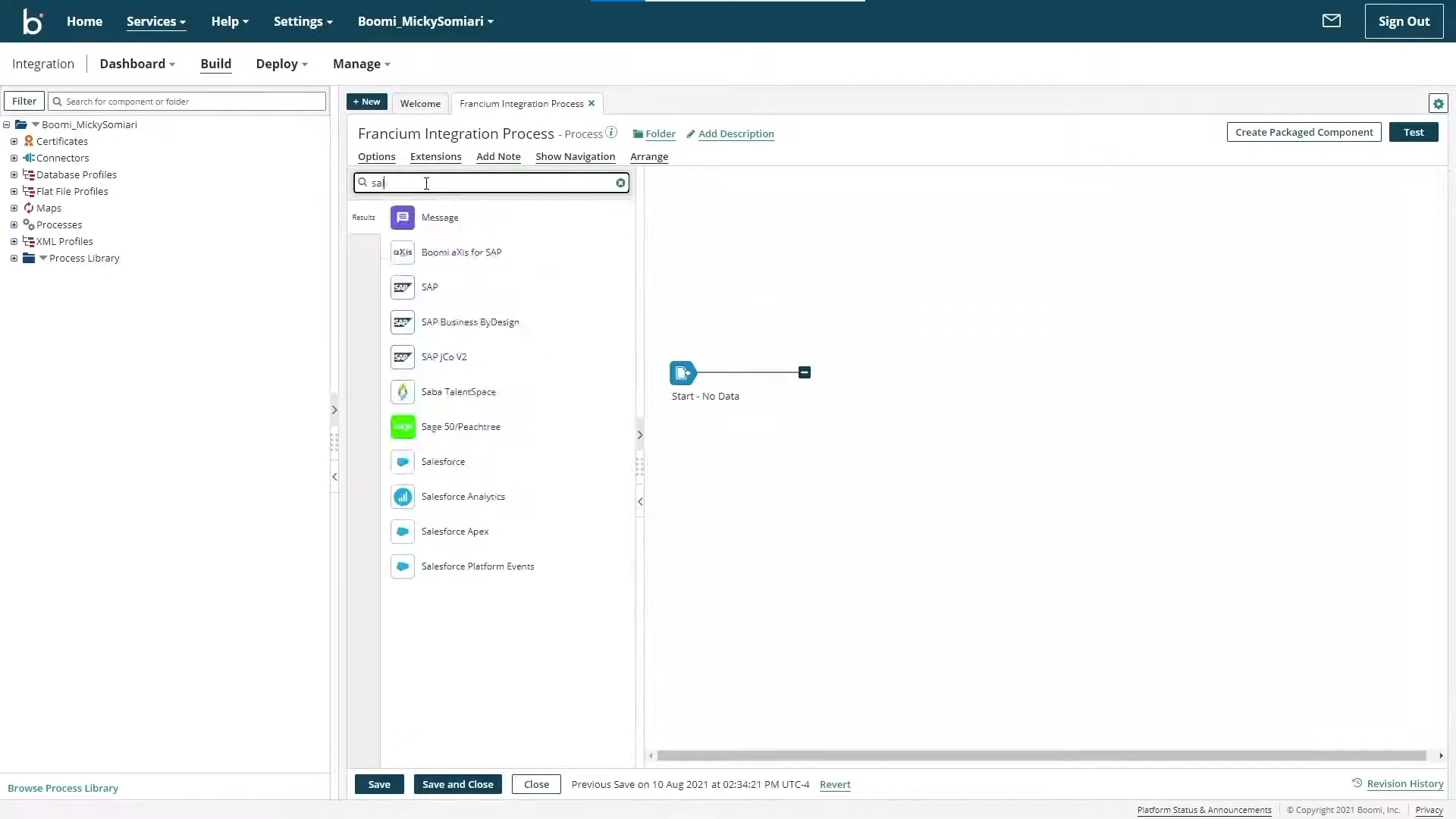
Boomi is a cloud-based integration platform that connects diverse applications, data sources, and systems. Designed with a user-friendly, low-code interface, the platform enables both technical and non-technical users to build, deploy, and manage integrations efficiently. It also offers a comprehensive suite of tools, including API management, data integration, and workflow automation.
Platform key features
- Extensive Pre-built Connectors: Pre-built connectors for various systems, enabling users to quickly implement integrations and reduce development time.
- Master Data Hub: A central hub to sync data across systems, ensuring consistency and accuracy for informed decision-making.
- Event-Driven Architecture: Supports real-time, event-driven integrations for businesses to respond promptly to data changes and operational events.
- Boomi AI: Integrate and automate with generative AI, enhancing the platform’s capabilities in handling various manual processes.
Platform pros and cons
Pros:
- User-Friendly Interface: The intuitive, low-code design allows users with limited coding experience to create and deploy integrations efficiently.
- Comprehensive Feature Set: Boomi offers a wide range of functionalities, including API management, EDI capabilities, data hub, and workflow automation, making it a versatile integration solution.
- Scalability: The platform is designed to handle businesses of varying sizes, providing scalable solutions that grow with the organization’s needs.
Cons:
- Learning Curve for Advanced Features: While basic integrations are straightforward, mastering more complex functionalities may require a steeper learning curve and dedicated training.
- Performance Limitations with Complex ETL Processes: Users face challenges in handling complex Extract, Transform, Load (ETL) processes.
Jitterbit
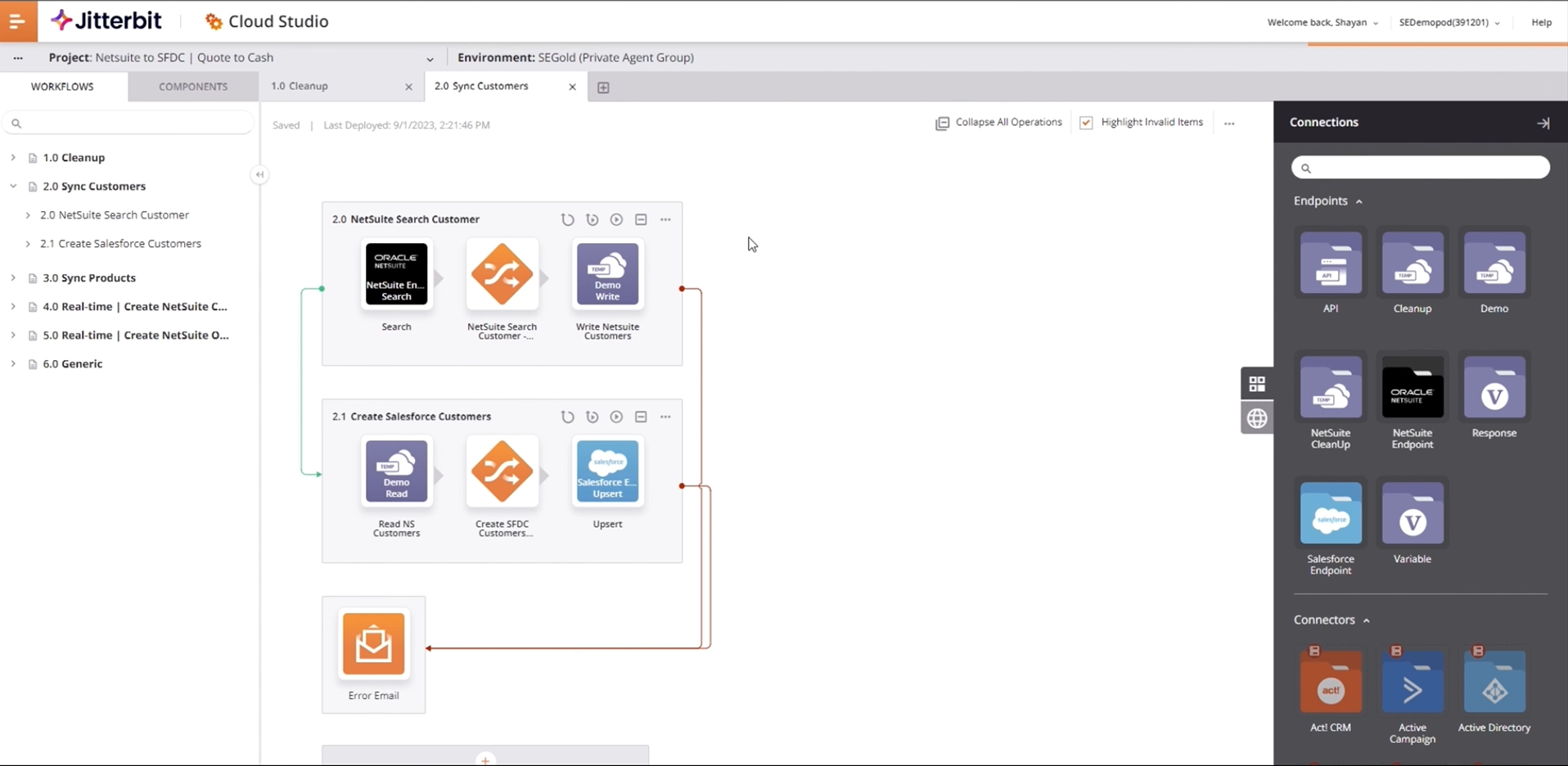
Jitterbit is a unified, AI-infused low-code platform designed to streamline integration, orchestration, automation, and application development. It enables businesses to connect various applications, data sources, and systems, facilitating seamless data flow and process automation. The platform’s user-friendly interface makes it accessible to both technical and non-technical users.
Platform key features
- Harmony Platform: A comprehensive suite that combines integration, API management and application development where users create and manage integrations and APIs efficiently.
- Pre-built Connectors and Templates: Vast library of pre-built connectors and templates, enabling rapid integration with popular applications and systems.
- API Management: Facilitates the creation, deployment, and management of APIs, allowing businesses to expose and consume services securely and efficiently.
- App Builder (formerly Vinyl): A low-code application development tool that enables users to build scalable, secure, and compliant applications without extensive coding knowledge.
Platform pros and cons
Pros:
- User-Friendly Interface: Intuitive design simplifies the integration process.
- Responsive Customer Support: Users appreciate the platform’s support responsiveness and assistance with integration challenges.
- Versatility in Data Handling: Capable of managing and manipulating large amounts of data, making it suitable for big data integration.
Cons
- Learning Curve for Advanced Features: While basic integrations are straightforward, mastering more complex functionalities may require a steeper learning curve and dedicated training.
- Performance Limitations with Complex ETL Processes: Some users have noted challenges in handling complex Extract, Transform, Load (ETL) processes, which can impact performance in data-intensive scenarios.
Mulesoft
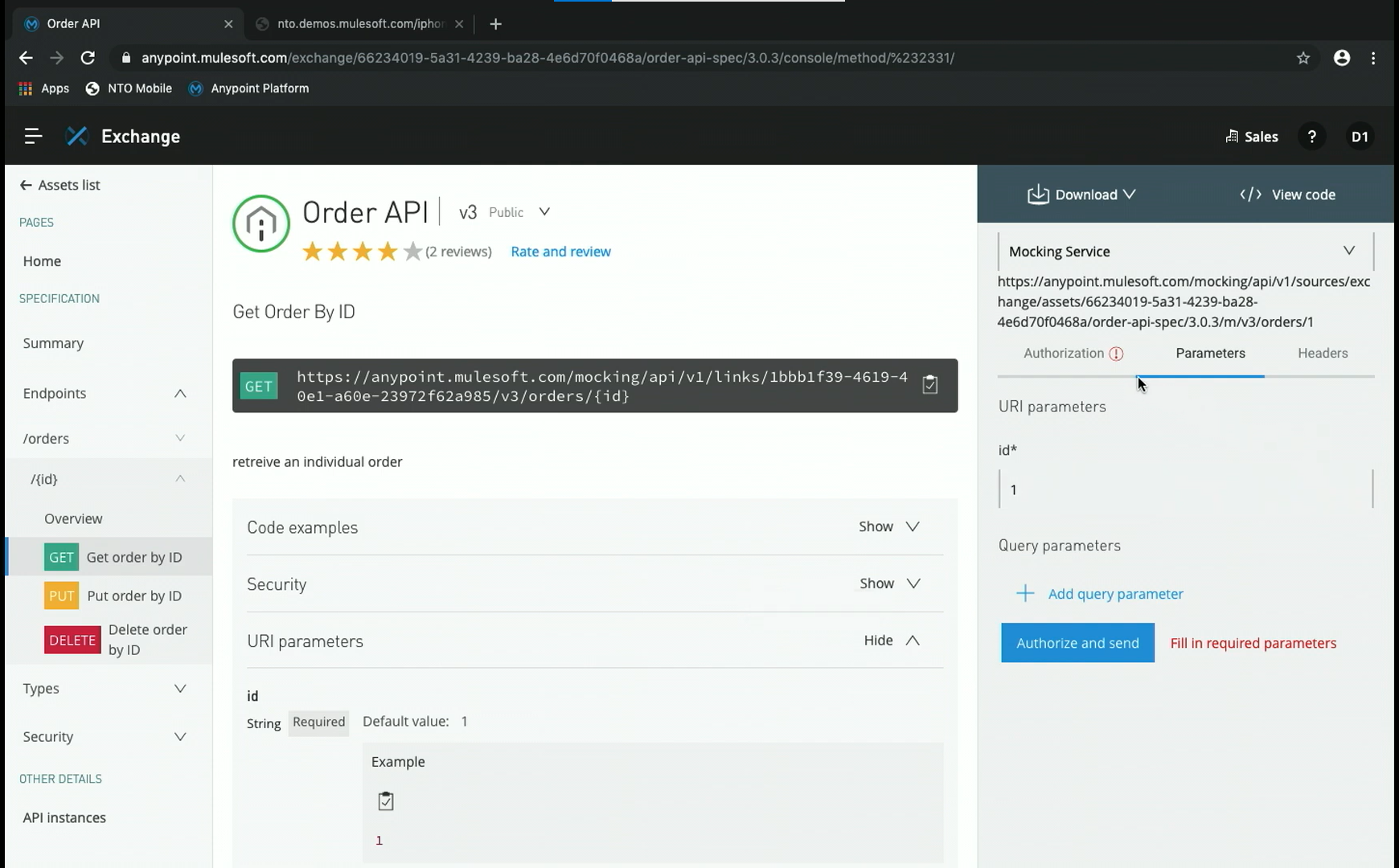
MuleSoft’s Anypoint Platform is a comprehensive integration platform that enables organizations to connect applications, data, and devices across on-premises and cloud environments. It offers a unified solution for API management, data integration, and automation, facilitating seamless connectivity and streamlined business processes. The platform is designed to support both technical and non-technical users, providing tools that cater to a wide range of integration needs.
Platform key features
- API-Led Connectivity: MuleSoft promotes an API-led approach, allowing users to design, manage, and secure APIs throughout their lifecycle as valuable reusable assets.
- Extensive Connector Library: The platform provides a vast array of pre-built connectors for numerous systems and services.
- DataWeave Language: MuleSoft’s powerful data transformation language, DataWeave, allows for efficient data mapping and transformation which simplifies complex integrations.
- Comprehensive Monitoring and Analytics: Built-in monitoring tools offer real-time visibility into integrations and APIs, assisting in performance tracking and issue resolution.
Platform pros and cons
Pros:
- User-Friendly Interface: The platform is noted for its intuitive design, making it accessible to users with varying levels of technical expertise.
- Robust API Management: MuleSoft excels in API management, providing comprehensive tools for designing, deploying, and monitoring APIs effectively.
- Scalability: The platform is highly scalable, accommodating the integration needs of both small businesses and large enterprises.
Cons:
- Technical Expertise Required: While user-friendly for basic tasks, mastering the platform’s API management capabilities requires technical expertise.
- High Cost: The platform’s pricing structure can be a barrier for smaller organizations or projects with limited budgets.
Celigo
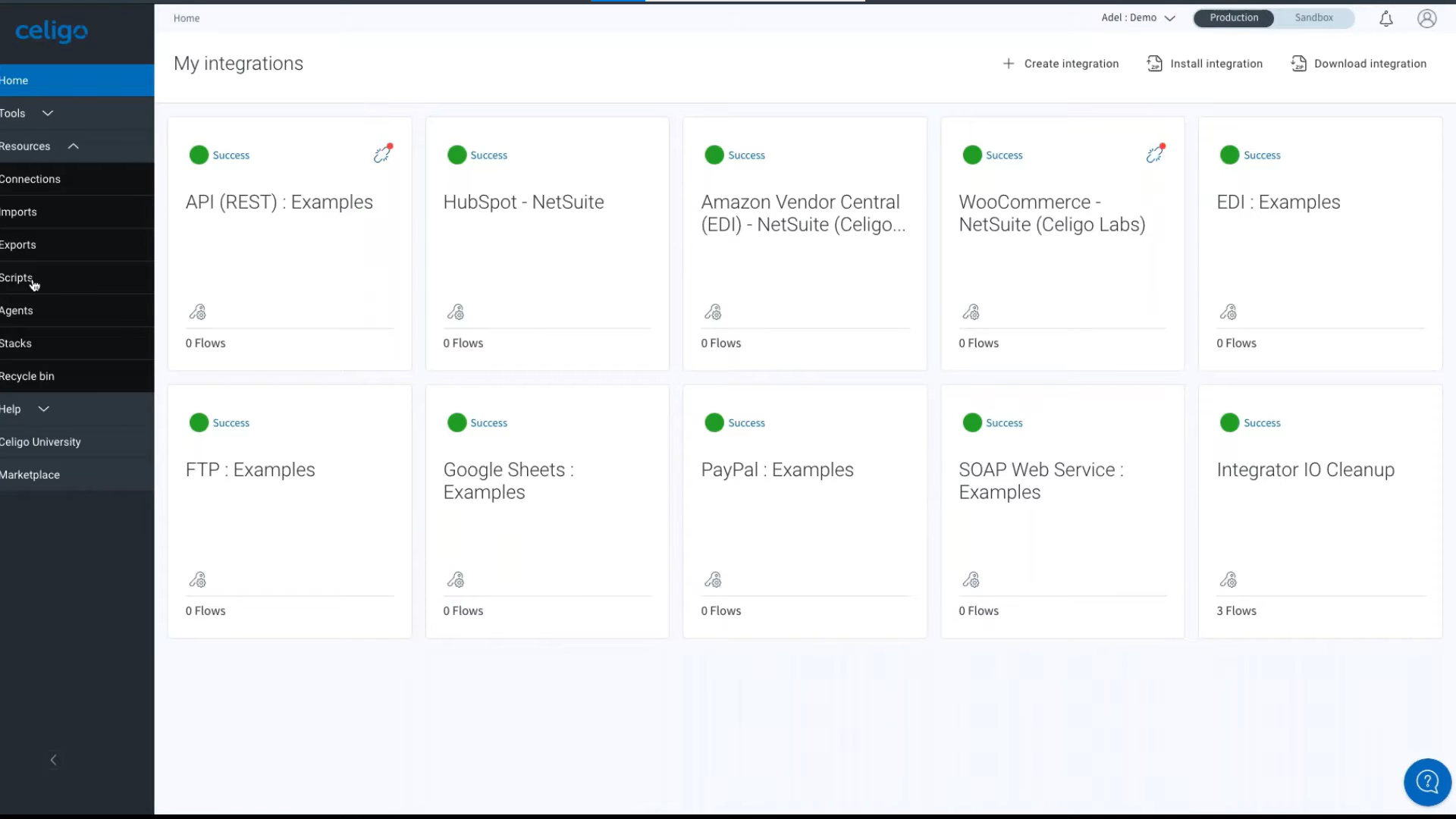
Celigo is an iPaaS solution that enables businesses to connect various applications, automate processes, and streamline data flows across cloud and on-premises systems. Designed with a user-friendly, low-code interface, Celigo caters to both technical and non-technical users, facilitating efficient integration and automation solutions.
Platform key features
- Integration Marketplace: Vast library of pre-built connectors and templates for popular applications such as NetSuite, Salesforce, Shopify, and more.
- API Management: Comprehensive tools for designing, deploying, and managing APIs, enabling businesses to create and expose services securely and efficiently.
- B2B/EDI Integration: Supports Electronic Data Interchange (EDI) integrations, facilitating seamless B2B communications and transactions with trading partners.
- AI Assistants and Workflows: Incorporating generative AI, Celigo offers AI assistants and workflows that enhance automation capabilities.
Platform pros and cons
Pros:
- Ease of Use: Intuitive interface which simplifies the integration process and reduces the learning curve for new users.
- Responsive Customer Support: The platform’s support team is noted for their responsiveness and proactiveness in resolving issues promptly and effectively.
- Cost-Effective Solutions: Celigo offers flexible subscription models, making it a cost-effective choice for businesses seeking robust integration capabilities without significant financial investment.
Cons:
- Error Handling and Debugging: Some users have reported challenges with the platform’s error handling and debugging tools, indicating that tracing the root cause of issues in complex workflows can be difficult.
- Management of Multiple Integrations: Managing numerous integrations simultaneously can be cumbersome, as the platform currently lacks a folder structure to categorize and organize them effectively.
SnapLogic
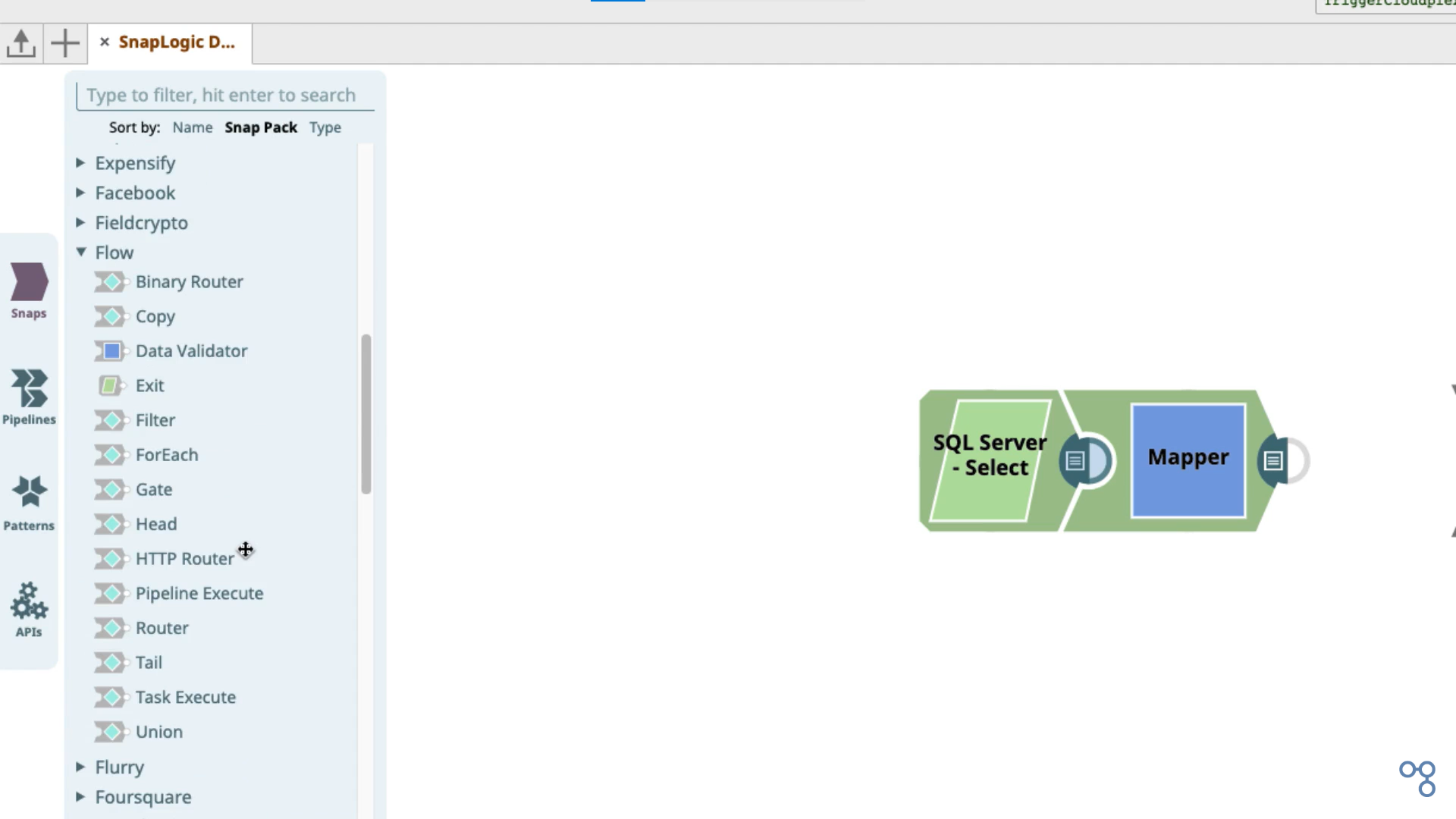
SnapLogic is a cloud-based integration platform that connects diverse enterprise applications, data sources, and systems seamlessly. Designed with a user-friendly, low-code interface, SnapLogic facilitates the creation and management of data pipelines, automating workflows across on-premises and cloud environments. The platform’s architecture supports elastic scaling with efficient data processing and integration capabilities.
Platform key features
- Unified Data Handling: Manages both structured and unstructured data, allowing for seamless integration without the need for data flattening or conversion.
- Extensive Pre-Built Connectors (Snaps): Offers over 1,000 pre-built connectors, known as Snaps, enabling rapid integration.
- API Management: API management tools to design, deploy, and manage APIs efficiently. Features include basic authentication, IP restriction, rate limiting, and OAuth 2.0 integration.
- Elastic Scaling with Snaplex: The platform’s data processing component, Snaplex, is built to scale out elastically, running in the cloud, behind a firewall, or within a Hadoop cluster for big data integration.
Platform pros and cons
Pros:
- User-Friendly Interface: Drag-and-drop interface, which simplifies the integration process for new users.
- Versatility and Scalability: The platform’s ability to handle various data formats and its elastic scaling capabilities make it suitable for organizations with diverse and evolving integration needs.
- Comprehensive API Management: SnapLogic’s robust API management features facilitate secure and efficient API creation and deployment, supporting various authentication methods and policies.
Cons:
- Performance with Large Data Volumes: Some users have reported performance bottlenecks when dealing with very high data volumes or extremely complex pipelines, which can lead to slower processing times.
- Learning Curve for Advanced Features: While the basic interface is user-friendly, mastering the platform’s advanced features requires a steeper learning curve and dedicated training.
Workato
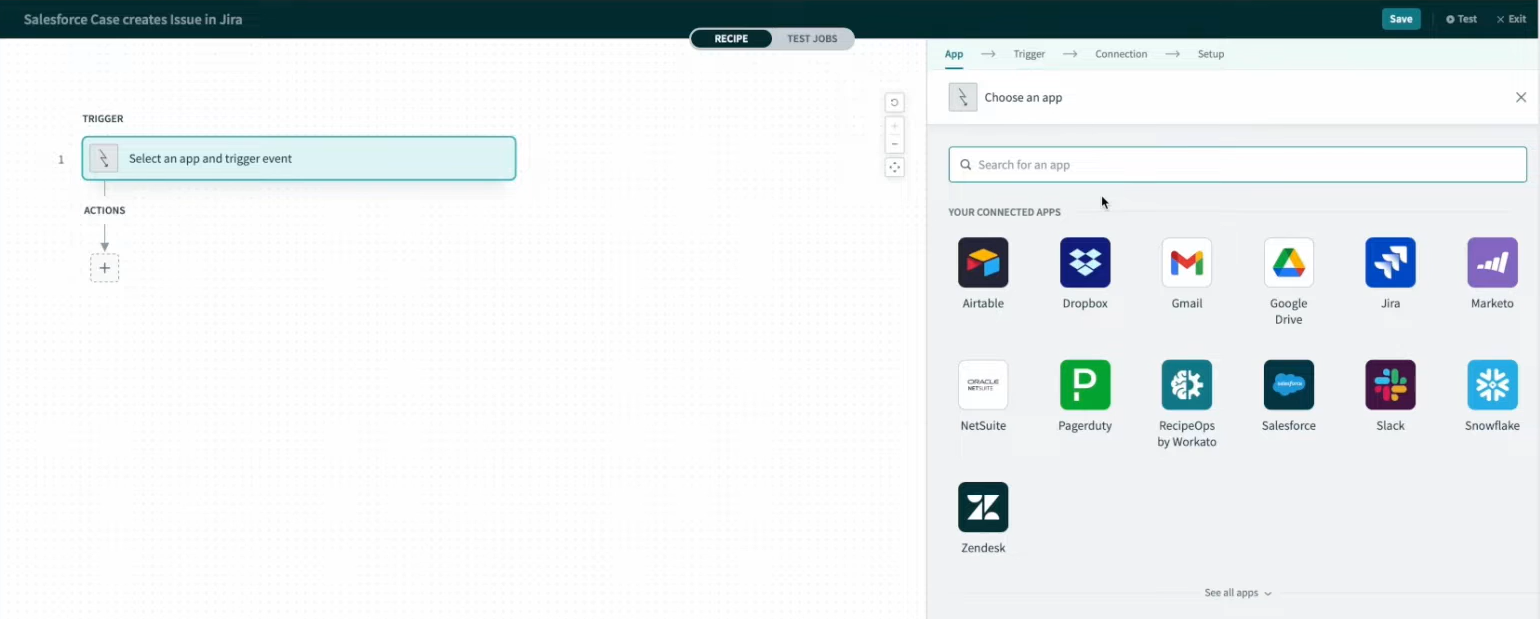
Workato is a leading integration platform designed for businesses to automate workflows by connecting various applications and data sources. It offers a cloud-based platform to integrate diverse systems and business processes. Both technical and non-technical users can build, share, and manage integrations efficiently with its low-code platform.
Platform key features
- Pre-Built Recipes: An extensive library of over 400,000 pre-built automation templates, known as “recipes” for applications such as Salesforce, Freshdesk, and more.
- Common Workato Runtime (CWR): This feature offers easy scalability and eliminates the need for capacity planning, minimizing operational costs and downtime.
- AI-Powered Automation: Generative AIs enhances automation capabilities, allowing businesses to optimize complex processes with intelligent automation.
- Comprehensive API Management: The platform enables users to design, deploy, and manage APIs efficiently, supporting various authentication methods and policies.
Platform pros and cons
Pros:
- User-Friendly Interface: Workato’s intuitive, low-code design makes it accessible for users with varying levels of technical expertise.
- Extensive Integration Capabilities: Pre-built connectors and the ability to create custom integrations across numerous applications and systems.
- Scalability: Designed to handle businesses of varying sizes, providing scalable solutions that grow with the organization’s needs.
Cons:
- Pricing Structure: Workato’s pricing model, starting at $10,000 per year for the Base Workspace plan, may be challenging for smaller businesses or projects with limited budgets.
- Occasional Performance Issues: Some users have reported occasional delays in data syncing during peak times, which can impact time-sensitive operations.
Airbyte
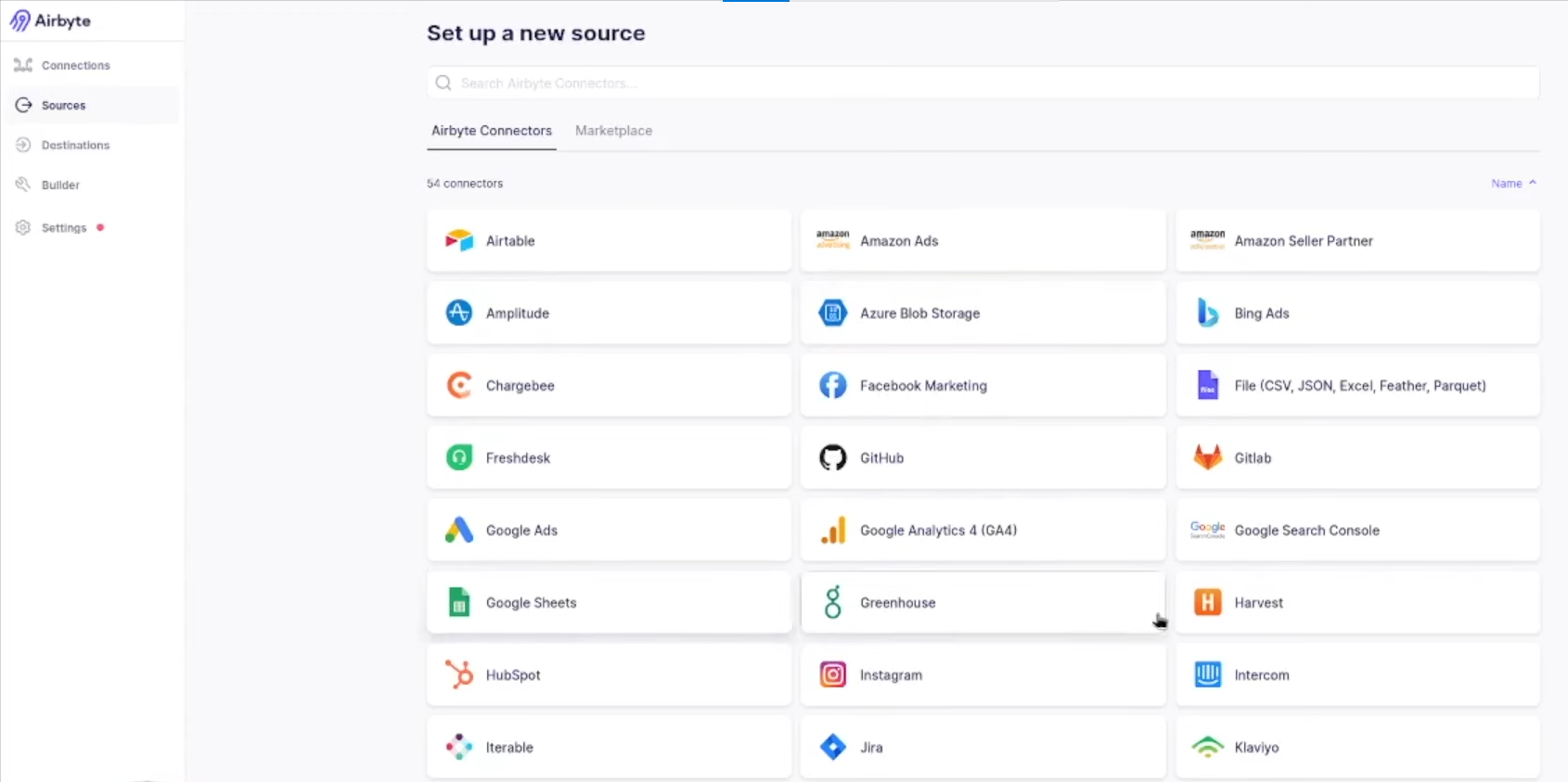
Airbyte is an open-source data integration platform designed to streamline the process of consolidating data from various sources into data warehouses, lakes, and databases. With a focus on flexibility and extensibility, Airbyte offers a vast array of connectors and supports both ELT (Extract, Load, Transform) and ETL (Extract, Transform, Load) processes.
Platform key features
- Extensive Connector Catalog: Over 550 open-source connectors, along with a wide range of APIs, databases, and file systems.
- Custom Connector Development: Unique tools for building custom connectors in minutes using low-code/no-code approaches or the AI Connector Builder.
- AI and LLM Integration: Facilitates the loading of unstructured data directly into popular vector store destinations like Pinecone, Weaviate, and Milvus. This enhances generative AI application accuracy and efficiency by leveraging Retrieval-Augmented Generation (RAG) and unstructured data integration.
- Flexible Deployment Options: Users can choose between deploying Airbyte on-premises or utilizing the fully managed Airbyte Cloud service, providing flexibility to meet various security and infrastructure requirements.
Platform pros and cons
Pros:
- User-Friendly Interface: Airbyte’s intuitive design simplifies the creation of ELT pipelines, making data integration accessible for businesses without technical expertise.
- Cost-Effective Solution: As an open-source platform, Airbyte offers a cost-effective alternative to proprietary data integration tools, reducing the financial barrier for organizations seeking robust data movement solutions.
- Active Community and Support: With a large and active community, users benefit from shared knowledge, regular updates, and a wealth of resources to assist in troubleshooting and optimizing their data pipelines.
Cons:
- Documentation Gaps: Some users have noted that the platform’s documentation can be lacking, particularly when constructing complex pipelines, which may necessitate additional support or exploration.
- Connector Maturity Variability: While Airbyte offers a vast number of connectors, the development and maturity levels of these connectors can vary, potentially leading to inconsistencies in performance and reliability.
Fivetran
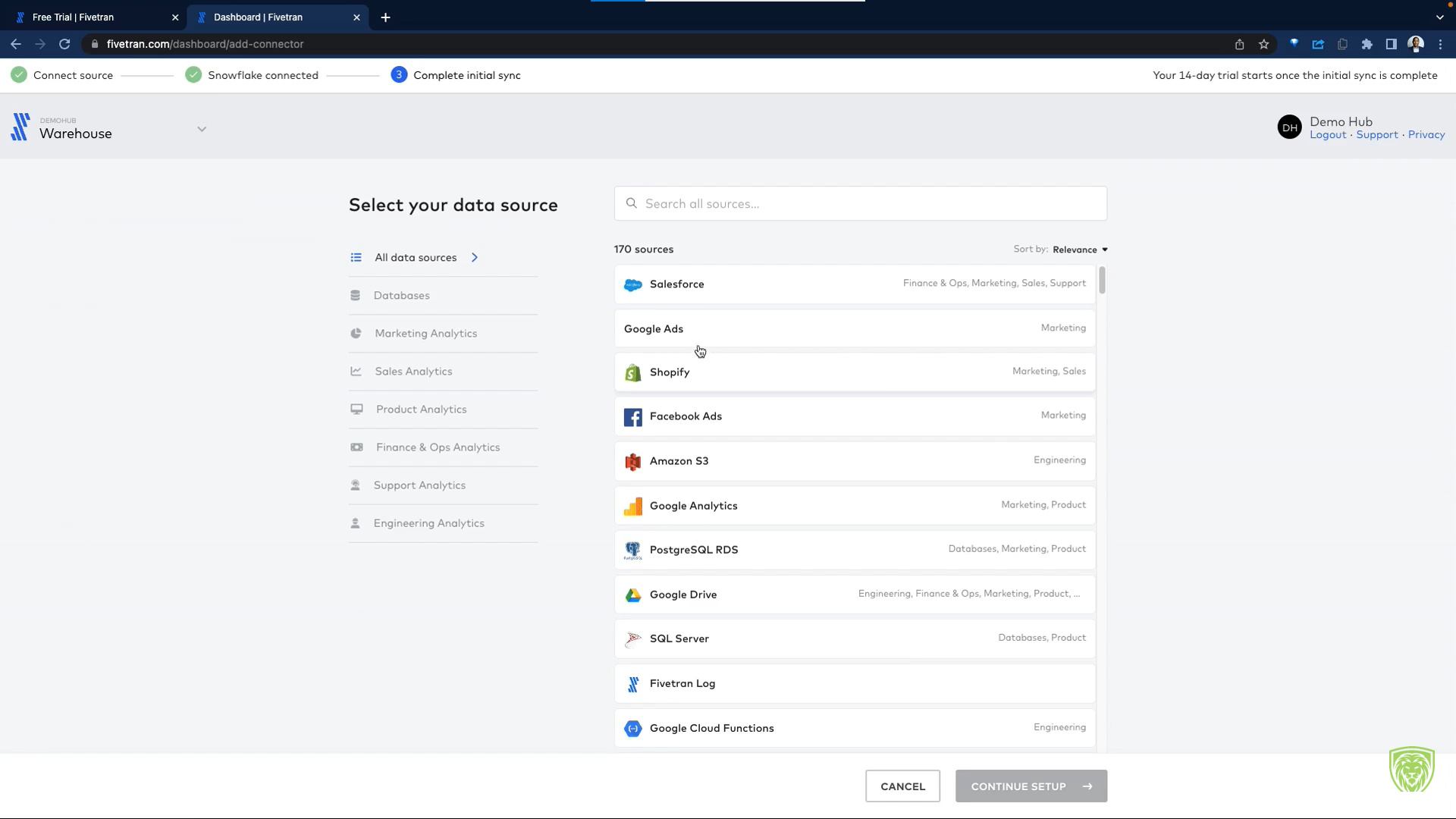
Fivetran is a fully managed data integration platform that automates the process of extracting, loading, and transforming data from various sources into centralized destinations. Designed for seamless and real-time data movement, the platform enables organizations to access up-to-date information without the need for extensive manual intervention.
Platform key features
- Extensive Connector Library: 700+ pre-built connectors for a variety of applications, databases, and services.
- Automated Data Synchronization: Log-based change data capture (CDC) to detect and replicate changes in source data, ensuring that destinations are consistently updated in near real-time.
- Scalable Deployment Options: Flexible deployment models, including fully managed cloud options, hybrid configurations, and on-premises setups.
- Robust Security and Compliance: Robust data security with certifications such as SOC 1, SOC 2, GDPR, and HIPAA.
Platform pros and cons
Pros:
- Ease of Use: Intuitive setup and navigation simplifies the data integration process and reduce the need for extensive manual intervention.
- Comprehensive Connector Availability: Supports a wide range of data sources, enabling businesses to integrate most of the tools they use without requiring custom solutions.
- Minimal Maintenance: As a fully managed service, Fivetran handles maintenance tasks, allowing users to focus on deriving insights from their data rather than managing data pipelines.
Cons:
Cost Considerations: Some users have noted that the pricing can become significant, especially when syncing large volumes of data.
Customization Limitations: The platform’s standardized approach may limit customization options for specific use cases, potentially requiring additional tools or workarounds for highly specialized requirements.
Talend
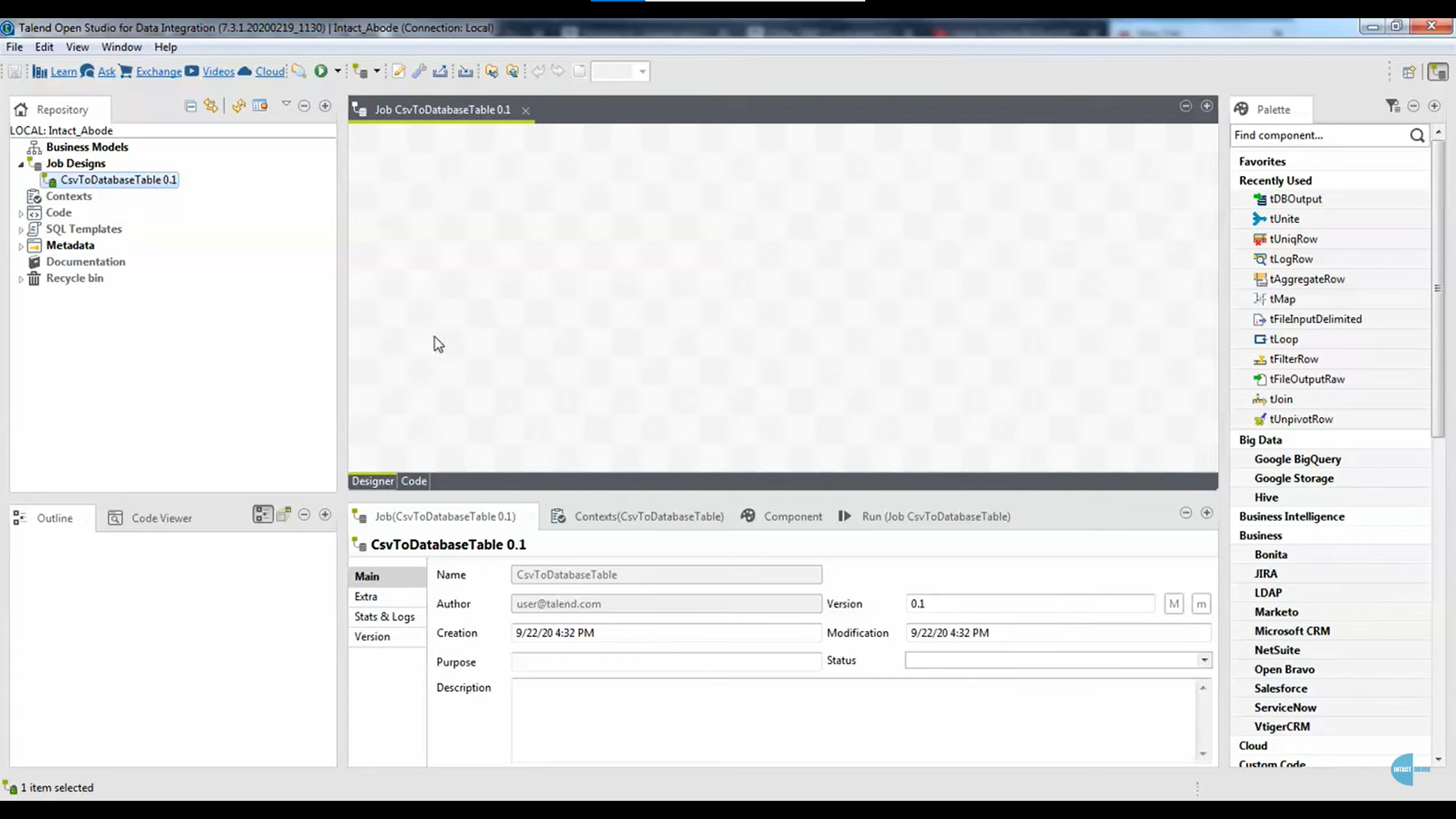
Talend Data Integration is an enterprise-grade solution to connect, transform, and manage data from diverse sources. As part of the Talend Data Fabric suite, it offers a unified approach to data integration. It combines rapid data ingestion, transformation, and mapping with automated quality checks to ensure highly reliable and accurate integrations.
Platform key features
- Extensive Connectivity: 1,000+ connectors and components for various data sources, both on-premises and in the cloud.
- Unified Data Integration and Quality: Combines data integration with data quality functionalities, allowing users to cleanse, profile, and mask data within the same interface.
- Flexible Deployment Options: Supports both on-premises and cloud deployments, providing flexibility to meet various infrastructure and security requirements.
- Advanced Scheduling and Monitoring: Efficient scheduling and monitoring tools to automate data workflows and maintain oversight of integration processes.
Platform pros and cons
Pros:
- User-Friendly Interface: Talend’s graphical interface allows users to easily map and transform data workflows.
- Comprehensive Data Management: The integration of data quality and governance tools within the platform ensures that data is not only accessible but also reliable and compliant with organizational standards.
- Strong Community Support: As an open-source platform, Talend benefits from a vibrant community, offering a wealth of shared knowledge, resources, and continuous updates.
Cons:
- Performance Issues with Large Data Volumes: Some users have reported that Talend jobs can become slower when processing substantial amounts of data, potentially impacting efficiency in data-intensive scenarios.
- Pricing Considerations: Users have noted that the pricing model has evolved, becoming more substantial, which may be a consideration for smaller organizations or projects with limited budgets.
Informatica
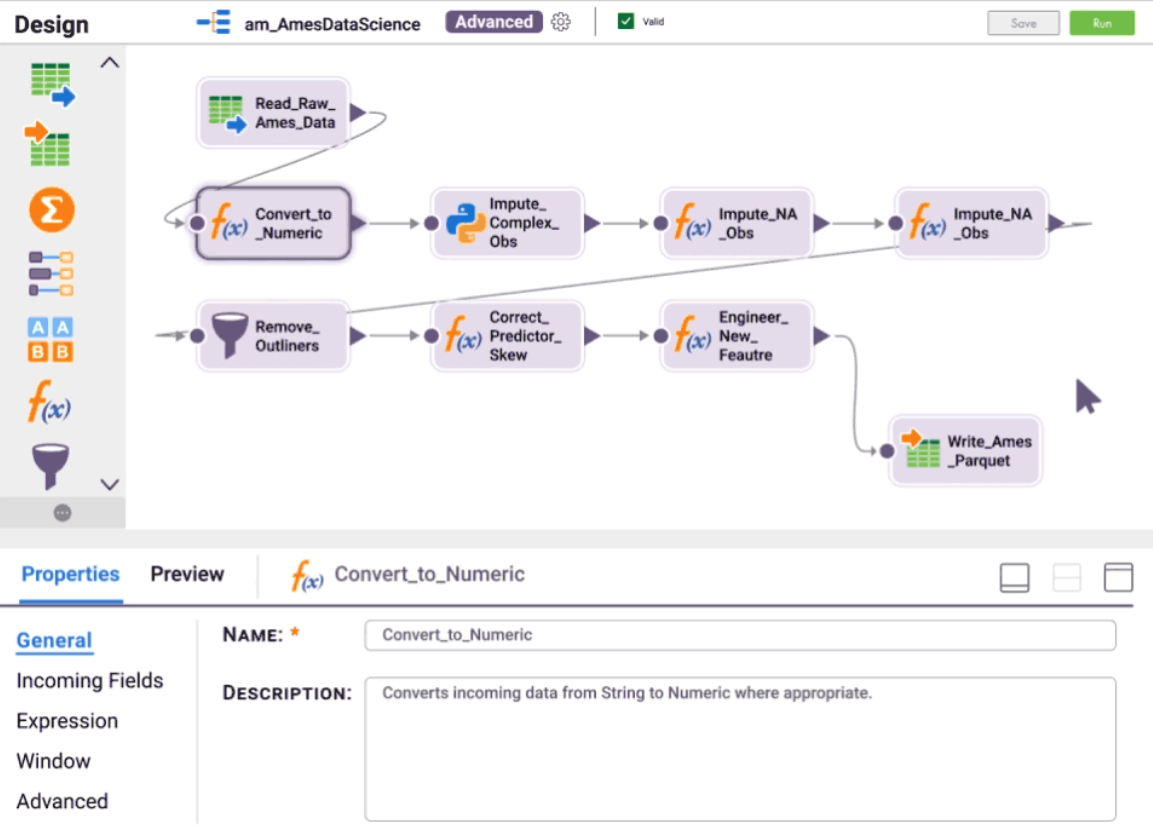
Informatica‘s Intelligent Data Management Cloud (IDMC) is an AI-powered data integration platform designed to manage, integrate, and transform data across multi-cloud and on-premises environments. It offers an accessible solution for data integration, quality, governance, and API management.
Platform key features
- AI-Powered Automation: Leveraging Informatica’s CLAIRE AI engine, the platform automates data discovery, mapping, and quality assessment, enhancing efficiency and reducing manual intervention.
- Comprehensive Data Management: Offers data integration, quality, governance, and API management capabilities under a single platform.
- Flexible Deployment Options: Supports data integration with cloud, on-premises, and hybrid environments, providing adaptability for diverse business infrastructure.
Platform pros and cons
Platform pros and cons
Pros:
- User-Friendly Interface: Users appreciate IDMC’s intuitive interface, which simplifies complex data integration tasks and enhances user productivity.
- Scalability: The platform’s cloud-native architecture allows for seamless scaling, accommodating growing data volumes and integration demands effectively.
- Robust Feature Set: IDMC offers a comprehensive suite of tools for data integration, quality, and governance, enabling organizations to manage their data assets effectively.
Cons:
- Pricing Considerations: Some users have noted that IDMC’s pricing is expensive for smaller organizations.
- Learning Curve for Advanced Features: Despite the user friendly interface, other advanced features have a steeper learning curve and require some level of technical expertise.
IBM
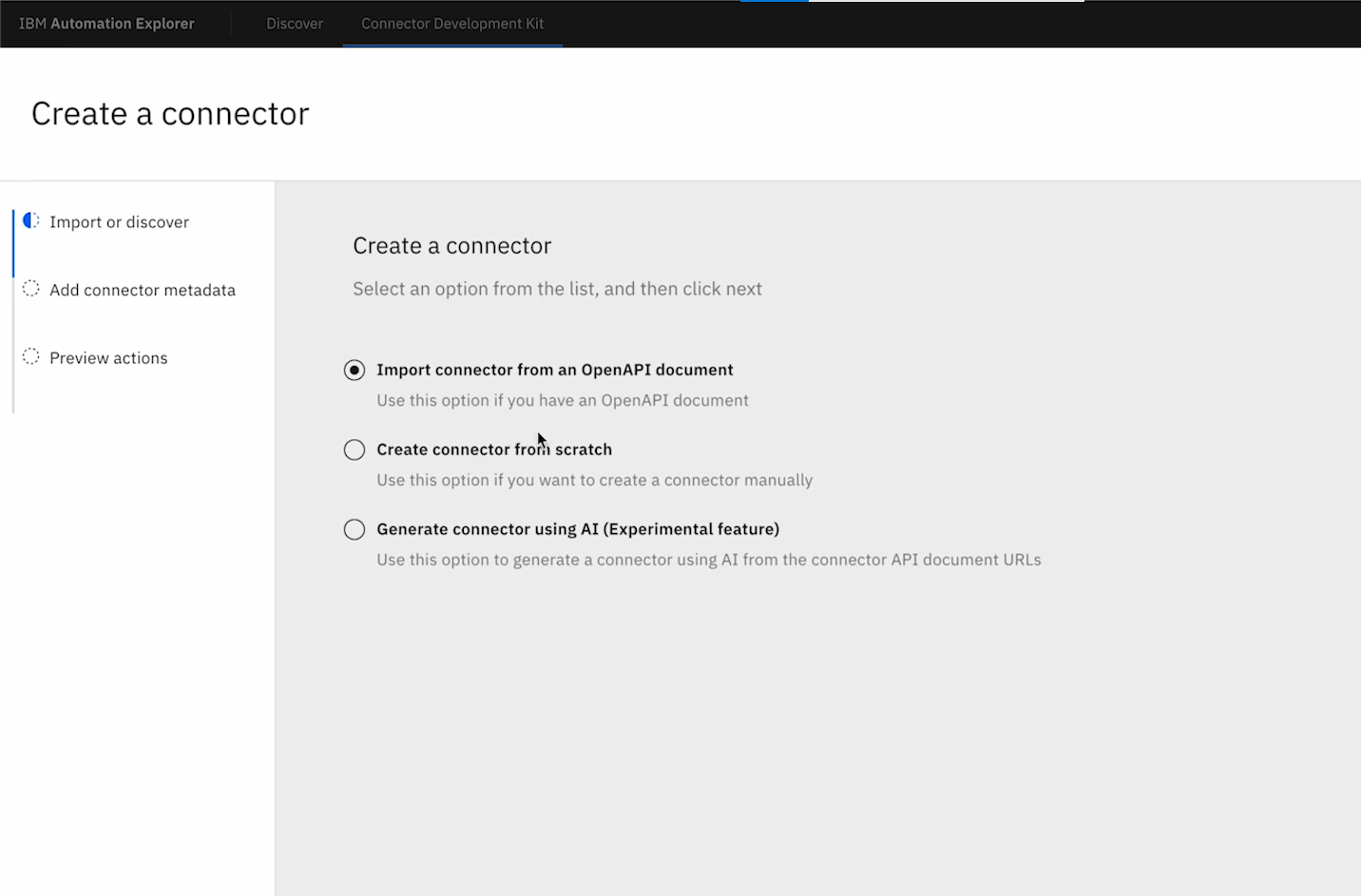
IBM App Connect is an integration platform designed that enables businesses to automate workflows, synchronize data, and create APIs, facilitating efficient communication between on-premises and cloud-based applications.
Platform key features
- Pre-Built Connectors & Templates: Offers hundreds of ready-to-use connectors to accelerate integration with applications like Salesforce, SAP, and Microsoft 365.
- AI-Powered Data Mapping: Automates data transformation and mapping, reducing manual effort and improving accuracy.
- Flexible Deployment Options: Supports on-premises, cloud, hybrid environments, and a fully managed iPaaS on AWS.
Platform pros and cons
Pros:
- Comprehensive Integration Capabilities: Can connect various applications and data sources for a wide range of integration scenarios.
- Efficient Error Handling and Technical Support: Robust error handling capabilities and responsive technical support with prompt issue resolution.
- Scalability and Flexibility: Recognized for its scalability and flexibility, accommodating the integration needs of both small businesses and large enterprises.
Cons:
- Initial Learning Curve: Some users have reported that the platform can be challenging to master initially, particularly when dealing with complex integration scenarios.
- Development and Transformation Limitations: Certain users have noted that the development and transformation capabilities may not be as advanced as those offered by some competitors, potentially requiring additional customization for specific use cases.
Comparative analysis of top data integration platforms
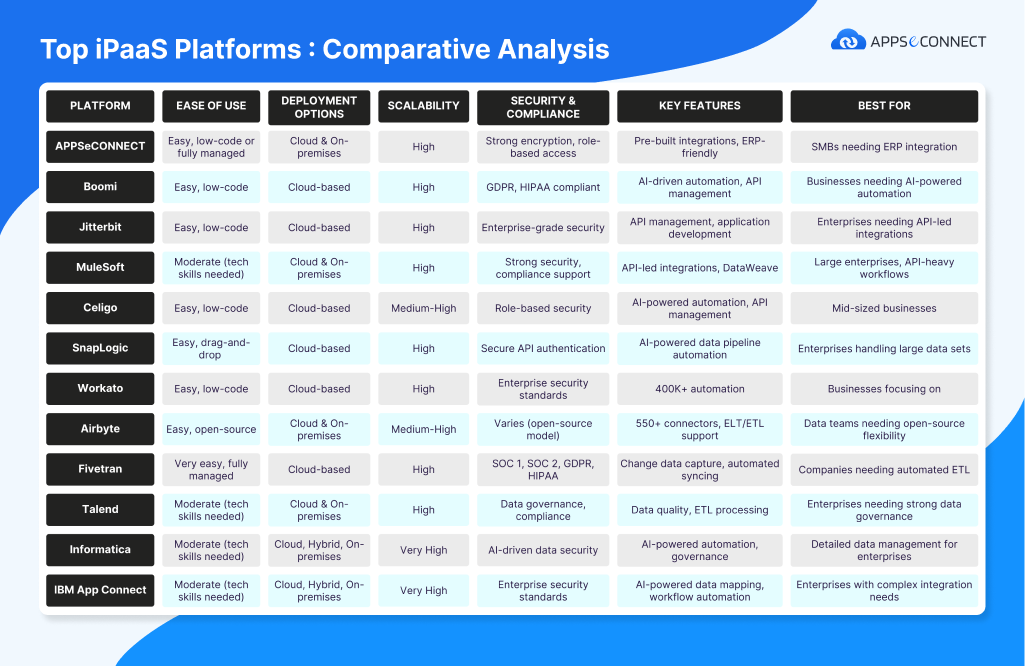
Which is the best data integration platform for your business?
As all businesses have different, unique processes and requirements, so there is no one-size-fits-all approach when it comes to data integration. Choosing the best integration platform for your business must be a thorough process where you:
- Pen down your integration requirements in detail
- Assess different platforms and evaluate different factors which we discussed at the start
- Look at your own budget and consider the ROI of integration.
- Discuss with stakeholders to make the final decision
While we can’t outright name a single platform as the best for your or any business, the goal is to help you speed up the research process with our comparative analysis.
The next step for you is to shortlist the top platforms and take a demo to experience the features and capabilities firsthand. That way, you’ll know for sure which platform is the most suitable for your data integration needs.
Looking to integrate your ERP, CRM and eCommerce systems? Try APPSeCONNECT
If your integration needs specifically revolve around connecting your central ERP system with other peripheral applications such as CRM and eCommerce solutions, APPSeCONNECT is the platform of choice! We’re the go-to experts for ERP integration, offering pre-built connectors as well as custom integrations with fully managed services for all popular ERP systems.
We have carved a strong reputation for powerful and reliable integrations within the SAP and Microsoft ecosystem. With SAP-certified integrations and multiple consecutive leader badges from G2 for eCommerce data integration, APPSeCONNECT has become the #1 choice for enterprises seeking ERP integrations with CRM, eCommerce and other enterprise systems.
See how we’ve helped many businesses like yours with successful data integrations. Click below to read our case studies.
APPSeCONNECT data integration case studies
You can also explore our integration library by choosing your ERP system from the list below.
Conclusion: Find the Right Data Integration Platform for Your Business
Choosing the best data integration platform isn’t just about features. It’s about finding a solution that fits your business needs, scales with your growth, and delivers the best ROI. With so many options available, the key is to assess your integration requirements, compare platforms based on critical factors, and take advantage of free trials or demos to experience them firsthand.
If you’re looking for a robust, user-friendly, and reliable data integration platform, especially for ERP, CRM, and eCommerce integrations, APPSeCONNECT is an excellent choice. With pre-built connectors, a low-code interface, and strong ERP expertise, our platform simplifies complex integrations and ensures seamless data sync across your business systems.
Ready to experience effortless data integration? Try APPSeCONNECT with a free trial, or schedule a free demo, and see how our powerful and versatile data integration platform can transform your business.
Frequently Asked Questions (FAQs)
1. What is a data integration platform?
A data integration platform is a tool that connects different applications, databases, and systems, allowing seamless data transfer and consolidation. It helps businesses eliminate data silos, automate workflows, and gain real-time insights.
2. How do I choose the best data integration platform?
To choose the right platform, consider factors like ease of use, integration capabilities, scalability, security, and cost. Identify your specific integration needs and compare platforms based on their features and customer reviews.
3. What are the benefits of using a data integration platform?
A good data integration platform can:
- Automate data transfers between systems
- Reduce manual errors and save time
- Provide real-time insights for better decision-making
- Improve business efficiency and collaboration
4. Do I need technical expertise to use a data integration platform?
Not necessarily. Many modern platforms, like APPSeCONNECT, offer low-code or no-code interfaces, making it easy for non-technical users to create integrations. However, advanced customization may require technical knowledge.
5. What’s the difference between iPaaS and traditional data integration?
iPaaS (Integration Platform as a Service) is a cloud-based solution that offers flexibility, scalability, and real-time integrations without on-premise infrastructure. Traditional integration methods often require custom coding and on-site servers, making them less agile.
6. How secure are data integration platforms?
Security varies by platform, but top providers offer encryption, access controls, and compliance with industry standards like GDPR and HIPAA. Always check a platform’s security features before choosing one.
7. Can I integrate on-premises applications with cloud-based systems?
Yes! Many platforms, including APPSeCONNECT, support hybrid integrations, allowing you to connect on-premises applications with cloud-based solutions seamlessly.
8. How much does a data integration platform cost?
Pricing depends on the platform, features, and data volume. Some offer subscription-based models, while others charge per integration or data flow. Many providers offer free trials or demos, so you can test before committing.


